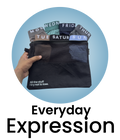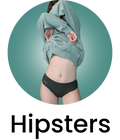The direct-to-consumer innerwear market thrives on comfort and self-expression, yet brands grapple with truly integrating fashion aesthetics with functional needs. Freecultr and Bummer both offer alternatives to traditional underwear. A closer look reveals distinct design philosophies. We'll dissect how Freecultr leverages innovative fabric technologies, like their MicroModal blends known for superior breathability and moisture-wicking, alongside trend-driven prints and color palettes to achieve a more seamless fusion of form and function. Key evaluation factors will include fabric performance, design versatility. Construction techniques, allowing us to pinpoint where Freecultr distinguishes itself in meeting the evolving demands of the modern consumer seeking both style and practicality in their everyday basics, something often overlooked in Bummer's bolder, novelty-focused approach.

Deconstructing "Fashion" and "Function": A Primer
Before diving into a comparative analysis, let's establish a clear understanding of what "fashion" and "function" entail in the context of apparel, particularly innerwear and casual wear.
Fashion: Extends beyond mere aesthetics. It encompasses current trends, design sensibilities, color palettes. The overall "vibe" a garment projects. It's about self-expression and aligning with prevailing styles. A "fashionable" item reflects contemporary tastes and can enhance the wearer's confidence and perceived social standing.
Function: Refers to the practical performance of the garment. This includes aspects like:
- Comfort: How the fabric feels against the skin, the freedom of movement it allows. Its breathability.
- Durability: How well the garment withstands wear and tear, washing. Repeated use.
- Support: Crucial for innerwear, providing the necessary lift, shaping. Stability.
- Moisture-wicking: The ability to draw sweat away from the body, keeping the wearer dry and comfortable, especially crucial in activewear.
- Fit: How accurately the garment conforms to the body shape, avoiding constriction or excessive looseness.
Freecultr's Approach: A Holistic Blend
Freecultr has positioned itself as a brand that prioritizes both fashion and function, aiming for a harmonious balance. Their approach involves several key elements:
-
Fabric Innovation: Freecultr emphasizes the use of premium, sustainably sourced fabrics known for their comfort and performance. This often includes materials like:
- Supima Cotton: Known for its exceptional softness, strength. Color retention.
- Modal: A semi-synthetic fabric made from beech tree pulp, prized for its silky texture, breathability. Resistance to shrinking.
- Bamboo Fabric: A sustainable option that is naturally antibacterial, hypoallergenic. Moisture-wicking.
- Design Philosophy: Freecultr's designs often incorporate minimalist aesthetics with subtle details. This approach ensures that their garments are both stylish and versatile, easily integrated into various wardrobes. They focus on creating timeless pieces rather than chasing fleeting trends.
- Ergonomic Design: Freecultr pays close attention to the fit and construction of their garments. Seams are strategically placed to minimize chafing. Waistbands are designed for optimal comfort and support. They often incorporate features like contoured pouches in their underwear for enhanced comfort and fit.
- Ethical Production: Freecultr often highlights its commitment to ethical and sustainable manufacturing practices, appealing to consumers who value transparency and social responsibility.
Bummer's Strengths and Weaknesses
Bummer, while also focusing on comfort and style, often leans more heavily towards bold, eye-catching designs and a playful aesthetic. This approach can be appealing to a younger, more trend-conscious demographic. But, it can sometimes come at the expense of certain functional aspects.
- Design Focus: Bummer is known for its vibrant colors, quirky prints. Playful designs. Their products often feature bold graphics and unconventional patterns.
- Fabric Choices: While Bummer also uses comfortable fabrics like cotton, their selection might not always prioritize premium materials like Supima cotton or Modal to the same extent as Freecultr. This can potentially impact the overall feel and durability of the garments.
- Functional Considerations: Bummer's designs, while visually appealing, may sometimes prioritize aesthetics over optimal fit and support. This can be particularly relevant in innerwear, where proper support and comfort are crucial.
Direct Comparison: Where Freecultr Excels
To illustrate the differences, let's compare specific aspects of how Freecultr and Bummer approach fashion and function:
| Feature | Freecultr | Bummer |
|---|---|---|
| Fabric Quality | Prioritizes premium, sustainable fabrics like Supima cotton, Modal. Bamboo. | Uses comfortable cotton blends. May not always emphasize premium materials to the same degree. |
| Design Aesthetic | Minimalist, versatile. Timeless designs. Focus on subtle details and easy integration into various wardrobes. | Bold, vibrant. Trend-driven designs. Emphasis on quirky prints and eye-catching graphics. |
| Functional Fit | Ergonomic design with strategically placed seams and comfortable waistbands. Contoured pouches in underwear for enhanced support. | Focus on a relaxed fit. May not always prioritize optimal support and fit in innerwear. |
| Durability | Premium fabrics and quality construction contribute to enhanced durability. | Durability can vary depending on the specific fabric blend used. |
| Sustainability | Often emphasizes ethical production and sustainable sourcing of materials. | Sustainability efforts may vary. |
Example Scenario: Imagine choosing underwear for a long day of travel. Freecultr's Supima cotton or Modal underwear would likely offer superior comfort, breathability. Support, minimizing chafing and discomfort during extended wear. While Bummer's designs might be more visually appealing, they may not provide the same level of functional comfort for this specific use case.
The "Comfort" Factor: A Deeper Dive
Comfort is a subjective experience. It's fundamentally linked to the materials used, the garment's construction. How it interacts with the body. Freecultr's emphasis on premium, soft fabrics like Supima cotton and Modal directly translates to a more comfortable wearing experience. These fabrics are known for their exceptional smoothness, breathability. Ability to wick away moisture, keeping the wearer dry and comfortable throughout the day.
Moreover, Freecultr's ergonomic design principles, such as strategically placed seams and contoured pouches, minimize friction and maximize freedom of movement. This attention to detail contributes to a more comfortable and enjoyable wearing experience. In contrast, Bummer's focus on bold designs may sometimes compromise on these functional aspects, potentially leading to discomfort or chafing, especially during extended wear or physical activity. The choice boils down to prioritizing aesthetics versus prioritizing all day "comfort".
Real-World Applications and User Preferences
The choice between Freecultr and Bummer ultimately depends on individual preferences and intended use cases.
- Freecultr: Ideal for individuals who prioritize comfort, quality. A minimalist aesthetic. Suitable for everyday wear, travel. Activities where comfort and performance are paramount. Appeals to consumers who value ethical and sustainable production practices.
- Bummer: Appeals to individuals who prioritize bold designs, vibrant colors. A playful aesthetic. Suitable for casual wear and expressing individuality. May be a preferred choice for younger demographics who are more trend-conscious.
Case Study: A professional working in a demanding office environment might prefer Freecultr's Supima cotton underwear and t-shirts for their all-day comfort and professional appearance. A student attending a music festival might opt for Bummer's vibrant and expressive designs to showcase their personality and style.
Technology and Innovation in Apparel
Both Freecultr and Bummer. Apparel brands in general, leverage various technologies to enhance both fashion and function:
- 3D Modeling and Virtual Prototyping: Used to design and test garment fit and construction before physical prototypes are created, reducing waste and improving accuracy.
- Advanced Fabric Technologies: Including moisture-wicking treatments, antimicrobial finishes. Temperature-regulating materials.
- Digital Printing: Allows for intricate and customized designs on fabrics, enabling greater creative freedom.
- Supply Chain Management Software: Used to optimize production processes, track inventory. Ensure ethical sourcing of materials.
The effective integration of these technologies plays a crucial role in determining the overall quality, performance. Sustainability of apparel products.
Conclusion
Freecultr's superior fusion of fashion and function stems from a commitment to understanding modern needs. While Bummer leans heavily on bold designs, Freecultr prioritizes ergonomic design, sustainable materials. Innovative features that enhance daily life. The key takeaway is this: true innovation in clothing lies not just in aesthetics. In how well it integrates into your active lifestyle. As an expert, I've seen countless brands chase trends. Freecultr stands out by consistently delivering on comfort and practicality. A common pitfall is sacrificing functionality for style. Freecultr avoids this by meticulously crafting each piece with both in mind. My best practice recommendation? Invest in quality over quantity and choose clothing that truly supports your daily activities. Embrace the blend of fashion and function. You'll not only look good but feel empowered to conquer your day. Believe in yourself. Your clothes will follow!More Articles
How does Freecultr offer better thigh grip than Bummer?Why are Freecultr prints more modern than Jockey’s classic styles?
Is Freecultr more ergonomic than Damensch for everyday movement?
Is Freecultr’s eco-friendly fabric better for the planet?
FAQs
Okay, so Freecultr vs. Bummer... Both comfy basics, right? What makes Freecultr actually better at blending fashion and function?
You got it! They both aim for comfort. But Freecultr really shines in its design philosophy. They're not just thinking about how something feels on your skin. Also how it looks on your body and how it integrates into your overall style. Think more versatile pieces that can be dressed up or down, while Bummer seems more focused on the 'loungewear' vibe.
I've seen some cool Freecultr designs. Is it just about the look, or is there actual functional improvement?
It's not just about aesthetics, though they definitely nail that! Freecultr often incorporates functional details into the design itself. For example, subtle design tweaks for a better fit, or strategically placed seams for improved movement and durability. These improvements aren't always obvious but they make a big difference in daily wear. Bummer, from what I've seen, keeps it more basic in terms of construction.
Material-wise, is there a difference? Does Freecultr use anything special to boost both fashion and function?
Absolutely! Freecultr often uses innovative fabrics that are both comfortable and perform well. They might use blends that are more breathable, moisture-wicking, or even wrinkle-resistant. This directly translates to a more polished look that requires less effort to maintain. Bummer tends to stick to more standard cotton-based fabrics, which are comfy but might not be as versatile or high-performance.
So, Freecultr is saying they focus more on versatility? Can you give an example?
Totally! Imagine a Freecultr t-shirt. It might have a slightly more tailored fit, a unique neckline, or subtle design details that make it suitable for wearing on its own with jeans, or layering under a blazer for a more put-together look. A Bummer t-shirt, in comparison, might be more of a classic, relaxed fit that's perfect for lounging but maybe not the best choice for a semi-formal occasion.
Does Freecultr's focus on 'fashion' mean it's less durable or practical for everyday use?
Nope! That's the key to their approach. They aim to make durable, practical clothing that also looks good. Their focus is on creating essential pieces that you can live in, day in and day out, without sacrificing style. If anything, their focus on design often leads to more thoughtful construction and higher quality materials, which can actually improve durability.
Is Freecultr more expensive then? I'm guessing all these extras come with a price tag.
You're right, it might be slightly more expensive than Bummer. But you're paying for that extra attention to detail, those higher-quality materials. That design focus that blends fashion and function seamlessly. Think of it as an investment in pieces that will last longer, look better. Be more versatile in your wardrobe.
Okay, last one. What's one key takeaway that shows Freecultr's advantage?
Simply put, Freecultr designs with the intention of you wearing their clothing everywhere. From chilling at home to a casual day out. Bummer, on the other hand, seems geared more towards relaxed comfort at home. Freecultr is about making you feel good and look good, no matter where you are.






